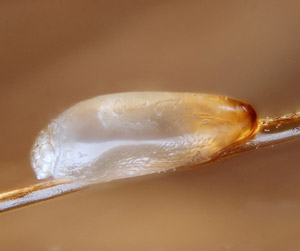Got Head Lice? Call the Nitpickers!
By Chris Williams on January 6, 2014.
 There’s two of them. They arrive wearing eerie magnifying glasses and carrying special lice combs and lots of hair clips. They are the lice ladies and they have come for your child. They call their unusual business “Lice Happens.” And they are making a lot of money nitpicking, picking head lice and eggs out of the hair of infested children.
There’s two of them. They arrive wearing eerie magnifying glasses and carrying special lice combs and lots of hair clips. They are the lice ladies and they have come for your child. They call their unusual business “Lice Happens.” And they are making a lot of money nitpicking, picking head lice and eggs out of the hair of infested children.
Two Annapolis neighbors, M.J. Eckert and Nancy Fields started the business from their homes in 2009 and now have nitpickers employed from Connecticut to North Carolina. Similar businesses have popped up across the nation. Once they had settled on their business plan, Eckert (a school nurse) and Fields (a computer geek) put an ad on Craigslist offering free lice treatment. “We needed guinea pigs,” Eckert said.
The term, “nitpicking” which now means being extra fussy, originally referred to the removal of louse eggs (called nits) from hair. The white, cylindrical eggs are “glued” onto the hair shaft by the female louse and are very difficult to remove. The tenacious eggs remain on the hair even after they have hatched which causes problems in getting kids deemed “lice-free” by their schools.
The Lice Happens nitpickers first apply foam to the child’s hair to loosen the nits. Then they methodically comb through 2 X 2 inch sections of the child’s hair, removing the nits as they go. The price is $100/hr, plus a service fee. A full comb-out of the average girl’s head takes about 90 minutes, while they can do a boy’s head in as little as 15 minutes. Most of their clients are 3 to 13 years old, with 7 being the average age.
It’s Good Work if You Can Stand it
At first, Eckert and Fields both kept their full-time jobs while they made lice appointments after work. They took in $100,000 in revenue their first year. That amount tripled the next year and kept rising until it reached nearly $700,000 in 2012. They pay themselves about $50,000 each and roll the rest back into the company.
The downside to hiring staff is that “there is a huge ‘ick’ factor,” Eckert says. “You would not believe some of the stuff we find in kids’ heads.” One poor girl had to be treated in the garage because her mother would not let her back in the house until she was lice-free. They treated one elderly gentleman who had a head lice infestation…under his hairpiece. They met a father who had used a shop vac on his son’s head, hoping to suck up the head lice. One extreme case involved a 17-year old girl who had suffered with head lice for 8 years. As they combed her hair, mountains of lice tumbled off of the comb. “Her mother kept calling to thank us for changing her child’s life,” Eckert said.
The ladies don’t worry about bringing head lice home. Head lice don’t travel well. They cling tightly to head hairs and die fairly quickly if separated from a head. Children get head lice most often by direct head-to-head contact or by sharing hats or brushes. Because head lice remain on heads, spraying insecticides in homes or schools serves no purpose. Covering your child’s head in Vaseline and wrapping it in cling wrap does no good either. The parents of children infested with head lice can shave their child’s head, use an insecticide shampoo, or call in the nitpickers.
Photo credit: Gilles San Martin / Foter.com / CC BY-SA